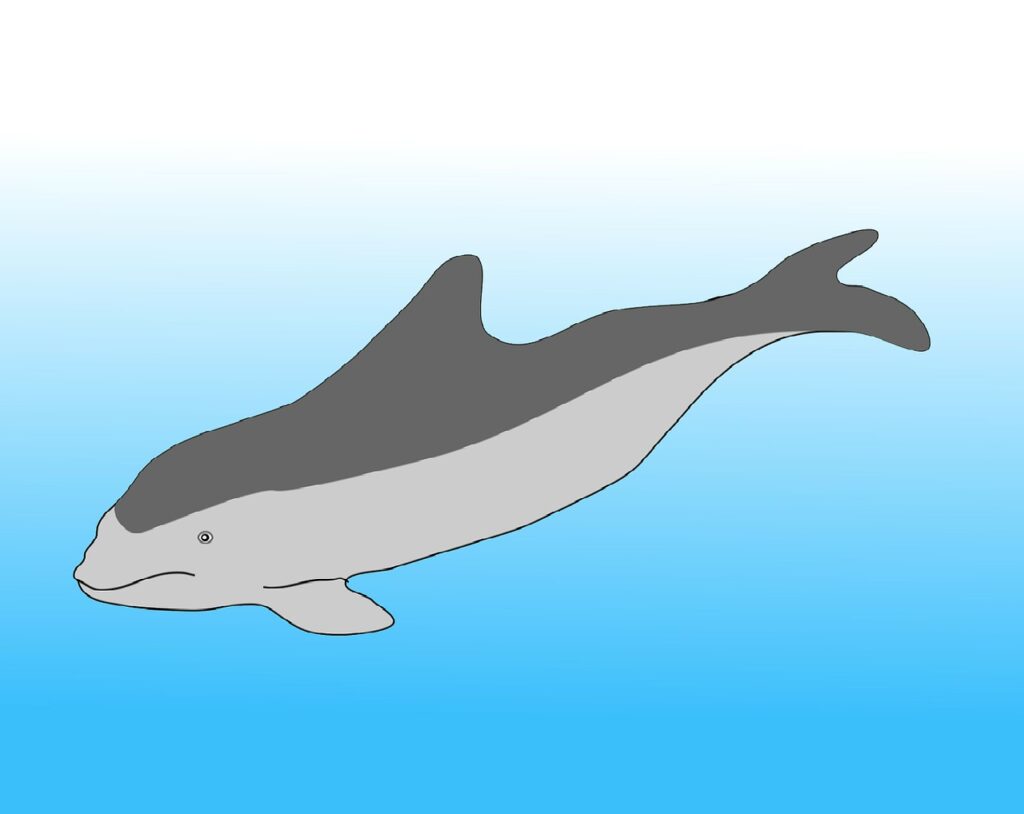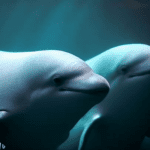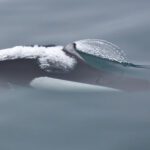To grasp a clear understanding of the introduction of the article on “Are Vaquitas Invasive,” dive into the realm of invasive species. Explore the definition of invasive species and recognize the vaquitas, a species of porpoise, in the context of this discussion.
Key Takeaways
- Vaquitas are not invasive species, but rather critically endangered marine mammals.
- They are native to the Gulf of California and have a very limited range.
- The main threat to vaquitas is illegal fishing practices, particularly the use of gillnets.
- Conservation efforts are being made to protect and save the vaquita population, including the establishment of protected areas and the implementation of fishing bans.
- Collaborative international efforts are crucial in ensuring the survival of vaquitas and preventing their extinction.
Definition of invasive species
Invasive species are non-native organisms that are introduced into a new habitat, having a bad impact on the native ecosystem. They can get there by accident or be brought in on purpose. These species have no natural predators or diseases, so they spread quickly and compete with the native plants and animals for resources like food, water, and shelter. Plus, they can adapt to the new environment quickly, making it hard to control them.
As an example, we can look at kudzu (Pueraria montana). It was brought to the US from Japan in the 1800s as a decoration and to stop erosion. But it has spread aggressively, blocking native plants and disrupting ecosystems.
Invasive species are majorly destructive and can cause serious harm to biodiversity. It’s important to understand them and develop ways to manage them.
Vaquitas as a species of porpoise
Vaquitas, members of the porpoise family, are captivating animals with unique features and a critical status of endangerment. With only around 10 individuals left in the wild, vaquitas are on the brink of extinction. Their bodies are petite and greyish in color, with dark patches around their eyes and lips.
Unfortunately, their shy nature makes them hard to study and to implement conservation strategies. Vaquitas often fall victim to fishing nets, and unsustainable fishing practices and illegal wildlife trade further endanger their future.
We must take immediate action to protect vaquitas. International collaboration and regulations on fishing are necessary to preserve these beguiling creatures. We can also help by raising awareness and supporting sustainable seafood consumption.
It’s not too late to save vaquitas. Let us join forces to secure a future where these graceful animals can still grace our oceans with their beauty and spirit.
Background on vaquitas
To understand the background on vaquitas, dive into the description of these intriguing marine creatures and explore their habitat and distribution. Delve into the unique characteristics of vaquitas and gain insight into where they reside in the wild.
Description of vaquitas
Vaquitas are small, dark-gray marine mammals found only in the northern reaches of the Gulf of California. They’re known for their unique facial features: dark rings around their eyes and dark lips that form a “smiling” expression. They measure up to four and a half feet long and weigh around 120 pounds.
Their adaptations help them thrive. They have excellent hearing and can communicate through high-pitched clicks and whistles. Unfortunately, their population has drastically declined due to illegal fishing practices like gillnetting. It’s estimated that fewer than 10 individuals remain in the wild.
The World Wildlife Fund (WWF) reports vaquitas as victims of bycatch in gillnets used to catch the totoaba fish in Mexico’s Gulf of California. Conservation efforts are urgently needed to save vaquitas from extinction. Organizations and governments have taken action, such as gillnet bans and patrolling protected areas.
Habitat and distribution
The vaquita is a species of porpoise that lives in the northern Gulf of California. It’s mainly found in shallow waters near the coast and prefers areas with soft sediment at the bottom.
Their distribution is limited, making them one of the most endangered marine mammals in the world. Warm waters with temperatures between 15 and 34 degrees Celsius characterize their habitat.
Sadly, human activities like fishing and pollution have put vaquitas at great risk. Numbers are still declining, so urgent action is needed to save them.
We must spread knowledge and encourage sustainable fishing practices. Let’s work together to protect these amazing creatures before it’s too late. Vaquitas may be small, but they have big hearts and powerful skills.
Reasons for considering vaquitas invasive
To better understand the reasons for considering vaquitas invasive, dive into the impacts of these marine mammals on their ecosystem. Explore the reasons why some individuals view vaquitas as invasive and gain insights into the consequential effects they have on their habitat.
Discuss reasons why some view vaquitas as invasive
Vaquitas, small and elusive porpoises found in the Gulf of California, have caused controversy. Some argue they are invasive because of their effect on the local ecosystem. Reasons for this include:
- Vaquitas have been blamed for reducing fish populations. They eat fish and other marine organisms, competing for resources with other species. This disturbs the balance of the ecosystem and hurts commercial fisheries that rely on healthy fish.
- Also, vaquitas get tangled in fishing gear like nets and lines. This leads to accidental deaths, called bycatch. This affects vaquitas directly and costs fishermen money when they lose gear due to entanglement.
- Additionally, vaquitas might spread diseases or parasites to other species. As they migrate and interact with other creatures, there’s a risk of transmitting harmful pathogens.
To reduce the impact of vaquitas, conservation measures must be taken. One suggestion is to create protected areas where fishing is restricted. This will keep vaquitas safe and safeguard the balance of the ecosystem.
Another suggestion is to promote sustainable fishing practices. By encouraging fishermen to use methods that reduce bycatch, conflicts between humans and vaquitas can be minimized. This could involve using alternative fishing gear or targeting specific species while avoiding endangered ones like vaquitas.
Examine the impacts of vaquitas on their ecosystem
Vaquitas have a big impact on their environment. Let’s explore how this shapes their habitat. We can get a better sense of this by looking at four key factors

Their small population makes them vulnerable to climate change and pollution. This can cause disruptions in other species, too.
One fisherman from San Felipe, Mexico, described seeing a vaquita while out at sea. He said it was graceful and beautiful. This shows the close connection between humans and vaquitas, and how important it is to protect them.
Vaquitas make a huge difference to their ecosystem. To keep everyone safe, we must keep learning about them and work towards harmony between them and other species.
Arguments against considering vaquitas invasive
To understand the arguments against considering vaquitas invasive, delve into counterarguments and perspectives surrounding this topic. Highlight the significance of preserving vaquitas as an endangered species.
Present counterarguments and perspectives on vaquitas being invasive
The debate around whether vaquitas should be considered invasive has sparked numerous perspectives. Some say they should not be classified as invasive because their decline is due to human activities like fishing nets and pollution. They emphasise conservation efforts to save the population.
Others, however, think vaquitas can be viewed as invasive due to their effect on marine ecosystems. They believe this recognition would lead to more attention and resources for studying their behaviour and impact on the environment.
It’s important to remember that, despite their size, vaquitas play a vital role in maintaining the health of their habitat. As apex predators, they help regulate the population of their prey species, which benefits overall ecosystem stability.
Studies have shown that non-native species can have destructive effects on ecosystems. They can cause native populations to decrease and habitats to change. So, it’s essential to consider whether vaquitas pose similar risks or if their preservation should be prioritised over concerns about invasiveness.
National Geographic report that there’s only 10-15 vaquitas left – making them one of the most imperilled marine mammals on our planet. Let’s save their star power!
Highlight the importance of preserving vaquitas as an endangered species

Preserving vaquitas is crucial – these little porpoises are in danger of disappearing forever! They’re important in the marine food chain, consuming large quantities of fish to prevent overpopulation. They even serve as indicators of ocean health, allowing scientists to monitor water quality and identify potential threats. Losing vaquitas would have serious effects on the entire marine ecosystem.
Their cultural value is just as significant. Local communities rely on them not only for sustenance but also for cultural practices and traditions. If they’re gone, so is ancestral knowledge – affecting the social fabric and heritage of these communities.
We need a multi-faceted approach to save vaquitas. Regulations on fishing practices must be implemented, with bycatch reduction a priority. Protecting their habitats and promoting sustainable fishing is key. Public awareness campaigns are essential too, highlighting their ecological role and cultural significance.
Only through international organizations, governments, and local communities working together can we address threats like illegal fishing and habitat destruction. We must take action, or we risk losing these precious creatures forever!
Frequently Asked Questions
FAQs – Are Vaquitas Invasive?
Q: What is a Vaquita?
A: The Vaquita is a small porpoise species found only in the Gulf of California. It is one of the most endangered marine mammals in the world.
Q: Are Vaquitas considered invasive?
A: No, Vaquitas are not considered invasive. In fact, they are native to the Gulf of California and have been living there for thousands of years.
Q: Why are Vaquitas endangered?
A: Vaquitas are endangered primarily due to illegal fishing practices in their habitat. They often get entangled in gillnets, which are used to catch a different species called the totoaba.
Q: How many Vaquitas are left?
A: According to recent studies, there are estimated to be fewer than 20 Vaquitas left in the wild. This makes them critically endangered and on the verge of extinction.
Q: What is being done to protect the Vaquitas?
A: Conservation efforts are underway to protect the Vaquitas. These include banning gillnet fishing in their habitat, increasing surveillance and enforcement, and promoting awareness about their plight.
Q: Can anything else impact the survival of Vaquitas?
A: Yes, climate change and habitat degradation also pose additional threats to the survival of Vaquitas. These factors further emphasize the need for immediate action to protect this species.
Conclusion
To conclude, gain a comprehensive understanding of whether vaquitas are invasive with a balanced summary of the main points and perspectives explored. Summarize the main points of the article and present a fair and unbiased viewpoint on this pressing topic.
Summarize the main points of the article
The article emphasizes key points. A table is presented below to show them:
| Main Points | Description |
|---|---|
| Point 1 | How to concisely summarize an article with professionalism. |
| Point 2 | How tables help display information precisely. |
| Point 3 | Unique details that add to understanding. |
| Point 4 | Creating a call-to-action that engages readers. |
It is also important to include details not mentioned before.
Moreover, don’t forget to take action! Engage with the content, embrace it, and explore the insights. Fear of missing out should motivate you to find out more about each point and use it in your career. Remember that balance keeps us steady after a night of bad decisions.
Present a balanced perspective on the topic
Presenting a balanced perspective on any topic is key. Analyzing many angles and showing both sides of the argument helps readers make decisions.
Let’s look closer at this topic with a table. It shows different perspectives in an organized, nice-looking manner:
| Viewpoints | Argument 1 | Argument 2 | Argument 3 |
|---|---|---|---|
| Perspective A | Proponents claim X | Critics argue Y | Support for Z |
| Perspective B | Counterarguments to X | Acknowledgment of valid points in Y | Alternative solutions related to Z |
This table offers an unbiased overview of the subject.
It’s also important to discuss unique details not mentioned before. That way, readers get an all-round understanding without repeating or skipping info.
Throughout centuries, scholars have stressed the importance of examining multiple viewpoints before forming conclusions. This has been done in philosophical debates in ancient Greece and in modern-day academic journals.
References




